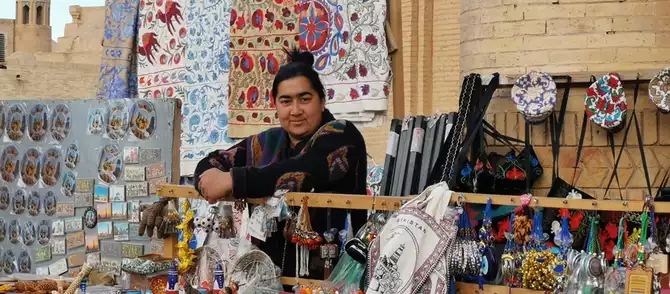
Photo credit: futurevisionconsultancy.com
Aziza, a small retail business owner in the city of Karshi, in southern Uzbekistan, had a dream: If only she had more money, she would buy a second sewing machine and hire her neighbor's daughter. Except she couldn't. She didn't have a credit history. She didn't have collateral. She was paid primarily in cash, so she didn't have any formal records. Aziza was invisible to the financial system.
Madina, another entrepreneur from the Tashkent region, also a small business owner, faced a similar fate. When a supermarket chain offered her a contract to supply eco-friendly packaging, she could have doubled her monthly revenue. She turned down the offer. Why? Because she could not get access to a short-term loan to purchase the raw materials she needed upfront. Madina didn't lack ambition, product, or demand; she only lacked credit.
These are true stories, far too common for women entrepreneurs, not just in Central Asia but across the globe. Multiply these stories by millions, and the enormity of untapped potential becomes blatantly evident. So, how do we change this and make Aziza’s and Madina’s small and bigger dreams come true?
The answer is not as complicated as it seems but there are two parts to it. Accelerating financial inclusion to empower individuals. And providing businesses with access to credit and capital. The good news? We know how to do this; but it’s time to scale up our efforts dramatically.

Photo credit: blogs.worldbank.org
What will it take?
First: innovation at scale. The landscape for financial inclusion has evolved in recent years. For the better. Financial innovations, such as alternative credit scoring models, digital lending platforms, and data-driven risk assessment tools, are transforming access to finance. By leveraging transaction data, mobile payments, and non-traditional credit histories, these innovations are breaking down barriers to credit for underserved entrepreneurs, particularly women-led enterprises. On a recent trip to the region, we met the founder of the first Tajik startup in Central Asia to attract investments from global venture capital heavyweights. The company leverages Artificial Intelligence (AI) to unlock access to credit. Lesson number one: innovation knows no borders.
Central Asian countries have made progress in improving access to capital, but much more could be done. In Uzbekistan, for example, only 19% of small enterprises use credit. And the full potential of digital payments remains untapped across the region, particularly among women, youth, and the rural populations. That makes it the perfect lab for innovation at scale. Increased use of digital payments would create new job opportunities in emerging sectors such as the gig economy, especially attracting young people. It could also stimulate job growth in traditional sectors through improved market access via e-commerce and digital marketplaces, for example.
Second: a business-friendly environment. Scaling digital payments requires policymakers who champion the private sector while protecting consumers, along with telecom liberalization, resilient digital infrastructure, and strong cybersecurity measures. Partial credit guarantees where the government shares the risk with lenders in case of defaults are also an effective way to unlock riskier lending and empower small businesses. And in a country like India, digital IDs proved crucial in expanding financial inclusion. Lesson number two: borrow successful strategies from others and adapt them to local contexts.
Third: Ambition and action. And this is where the World Bank Group comes in with a program aiming to expand access to capital and digital payments for individuals and SMEs. Our ambition? Leveraging World Bank Group’s funding with private capital to generate up to new or better jobs (including for women) across several countries in the region. And we are ready to deploy the full power of our private and public sector solutions to help entrepreneurs like Madina and Aziza expand their business.
How? By expanding digital payments, de-risking credit markets, building ecosystems for equity financing, and creating product markets across the entire region. Lesson number three: creating a regional market can help achieve scale and impact.
Picture Madina confidently accepting that contract from the supermarket chain, knowing she has the backing of a financial institution to meet her commitments and grow her business. Or Aziza buying that second sewing machine and hiring her neighbor’s daughter and possibly a few others. It’s time to make the invisible visible. And create millions of jobs and opportunities along the way.
Share on social media